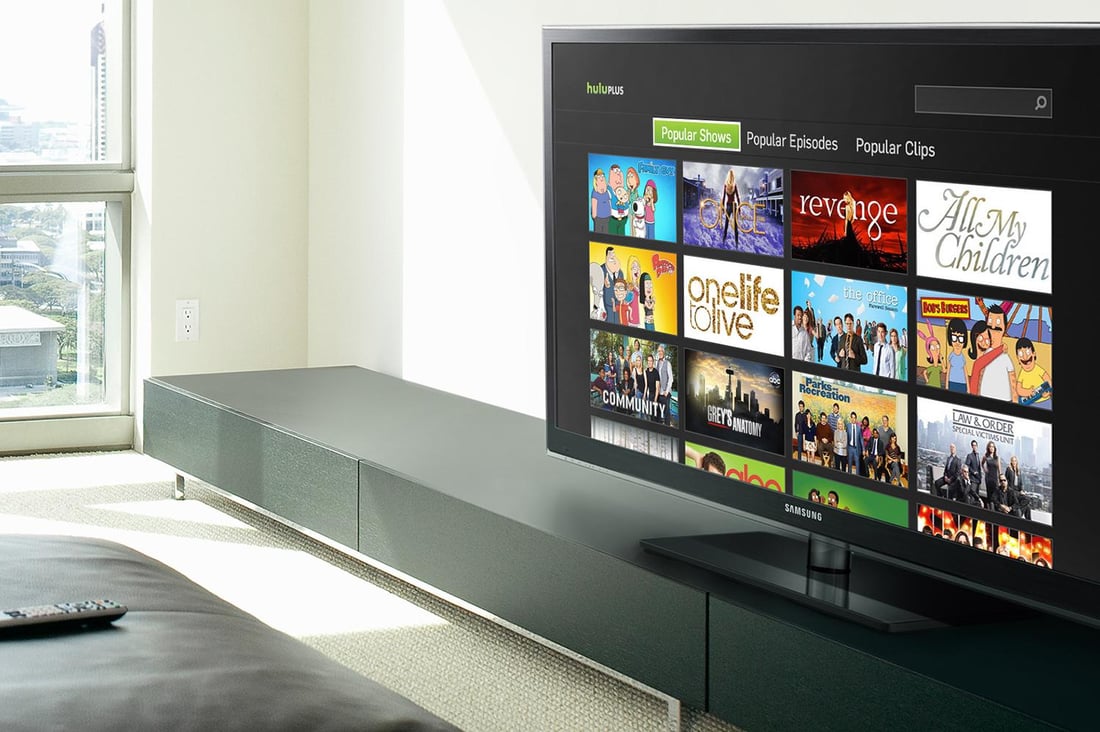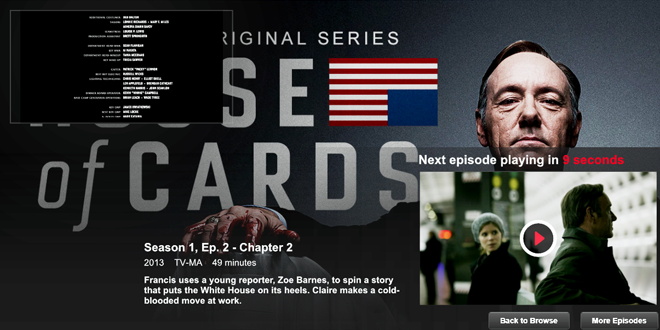Ad Dollars move from TV to Digital Media

It's an unsettling time for broadcast and cable companies as ad spend begins to flow away from traditional networks and into the digital realm on platforms like the web, social media, and Hulu. New York Times reporters Emily Steel and Sydney Ember give us insight into this growing trend.
Beginning Monday, television networks will roll out the red carpet for marketers during the annual bazaar known as the upfronts, trying to lure them into committing tens of billions of ad dollars for the coming TV season. If things go well, the networks will sell as much as 75 percent of their advertising time in the negotiations that follow a week of flashy presentations and star-studded parties.

But behind that lavish veneer, the mood at some television networks is nervous and the sales pitch urgent.
That is because broadcast and cable companies are asking marketers to open their wallets at a time of great anxiety in the industry, when TV ratings have collapsed and networks are fending off fierce competition from digital outlets.
Television viewing has plummeted 9 percent so far this season compared with the previous season, according to MoffettNathanson Research. To explain the drop, some industry executives and analysts point to the rapid increase in the amount of time people spend watching Netflix and other streaming alternatives. Netflix viewing accounted for about 43 percent of the decline in traditional TV viewing in the first quarter of this year, according to MoffettNathanson.
In the past, a decline in ratings did not always damage the networks during the upfronts. As audiences fragmented, conventional television remained the best approach for reaching huge numbers of viewers. Even as digital media grew, advertisers kept pouring more money into TV. They dipped into their print advertising budgets to fuel spending on digital ads.
But now even traditional television is splintering, especially as the major broadcast networks make their programming available for streaming. With the number of digital alternatives growing quickly, and with marketers seeking greater flexibility in how they allocate their spending, the industry is bracing for what many expect to be an anemic upfront market. That would follow a soft market last year, which was one of the weakest the industry has seen, said Michael Nathanson, an analyst for MoffettNathanson.
“The story around the ratings decline has been a persistent drumbeat that’s reached a fever pitch this year, to the point where marketers are thinking, ‘We need to seriously think about alternatives,’ ” said Amanda Richman, president for investment and activation at Starcom USA, a Publicis Groupe-owned media buying agency whose clients include large advertisers like Kellogg’s, Kraft Foods and Procter & Gamble.

“It feels like this is a pivotal year,” she said.
The total amount of money advertisers commit during the upfronts this year is expected to tumble 7 percent, according to Magna Global, an ad-buying group owned by the Interpublic Group. That represents a 10 percent drop in spending committed to broadcast networks and a 5 percent drop for cable networks.
John Janedis, a media analyst at Jefferies, is predicting total ad spending commitments to drop about 6 percent, to about $20 billion, with ad rates flat or up 3 percent.
“Clearly, we’re going through a transition here,” Chase Carey, chief operating officer of 21st Century Fox, said during an earnings call last week. “Advertisers, without a doubt, have more choices. They want more flexibility in some ways. You could say the upfront we’re about to go into, while important, is probably a bit of an antiquated practice, given where the world is heading.”
For the advertising world, that direction is toward digital, and more of that money is likely to come from the share that has gone to the networks. While some streaming services like Netflix do not accept advertising, marketers are increasingly seeking out other new digital outlets that do, like Snapchat, Vine and YouTube, where viewers — especially younger ones — are spending an increasing amount of time.

“We’re at the tipping point now where the very role of TV in our mix is under consideration,” said Ivan Pollard, a top marketing executive at Coca-Cola North America. “Ten years ago, they held a much stronger hand than they hold today, but they all know that. They’re talking differently to us.”
Magna Global predicts that total TV ad revenues will be flat over the whole year, even as spending on digital media increases 19.1 percent. The group forecasts that digital media ad revenues will match television ad revenues by the end of 2016, each accounting for about $67.5 billion in spending and about 38 percent of the total ad market.
“There’s no question that we’re seeing a new advertising reality here, because money definitely has migrated out of traditional media into new media,” Robert A. Iger, chief executive of the Walt Disney Company, said during an earnings call last week. He added that he expected his company’s networks, which include ABC, ESPN and the Disney Channel, to fare “just fine” during the upfronts.
To compete, television networks are featuring a host of their own digital offerings during this year’s upfronts, along with more data and targeting capabilities, qualities that are extremely important to marketers as they seek to increase the effectiveness of their ads. Executives are also highlighting television’s ability to reach broad audiences, and big events, like sports and awards shows, also dominate.
Rivalries among TV networks are becoming ever more cutthroat as they compete for their share of the ad-spending pie. That puts even more pressure on the networks to produce attention-grabbing hits.
“There are certain networks that have done very well this year, certain networks that haven’t done so well,” Leslie R. Moonves, chief executive of CBS, said during an earnings call last week. “I’m not going to go into great detail, but you could figure that out yourselves. So we are up, and we expect it to be a good marketplace.”
Some analysts warn against predicting TV’s demise just yet. “It is less impactful than it was, but it so dwarfs everything else,” said Brian Wieser, a media analyst with Pivotal Research. “We’re getting closer to the point when the world changes. We just haven’t seen it yet.”
- 0 Comments
- Topic: news

